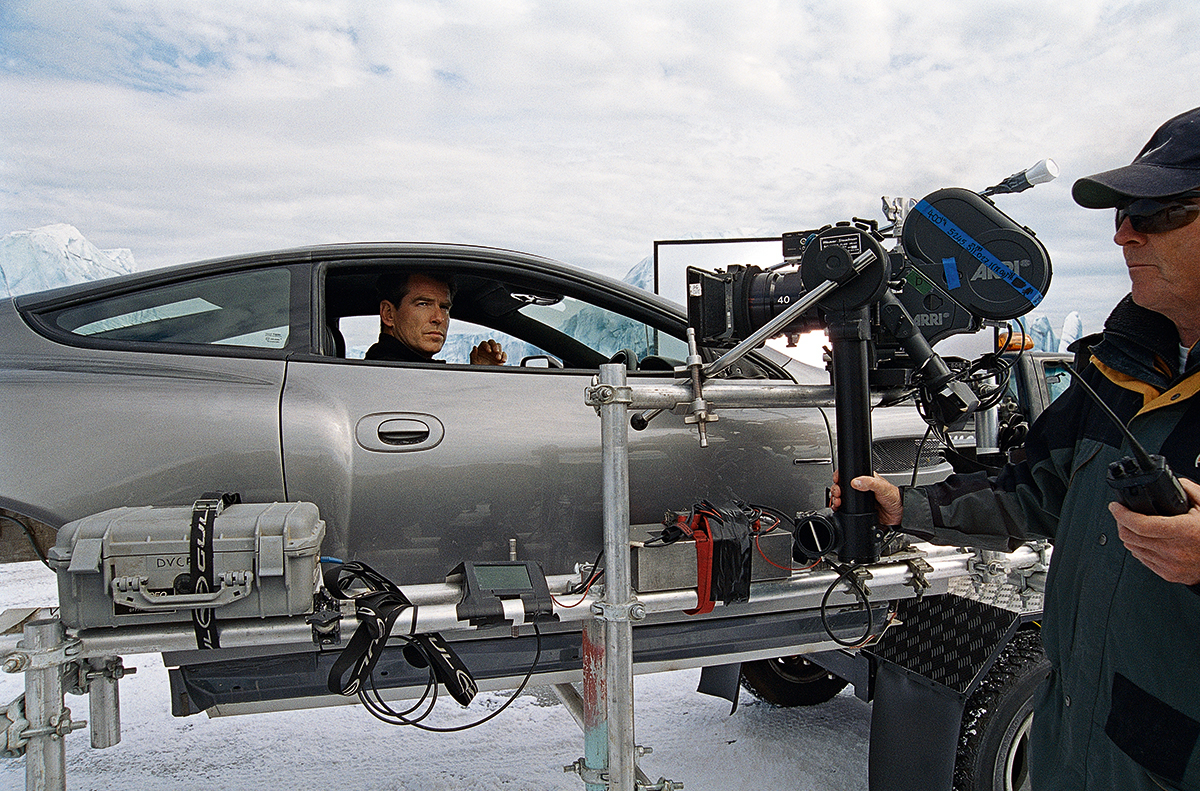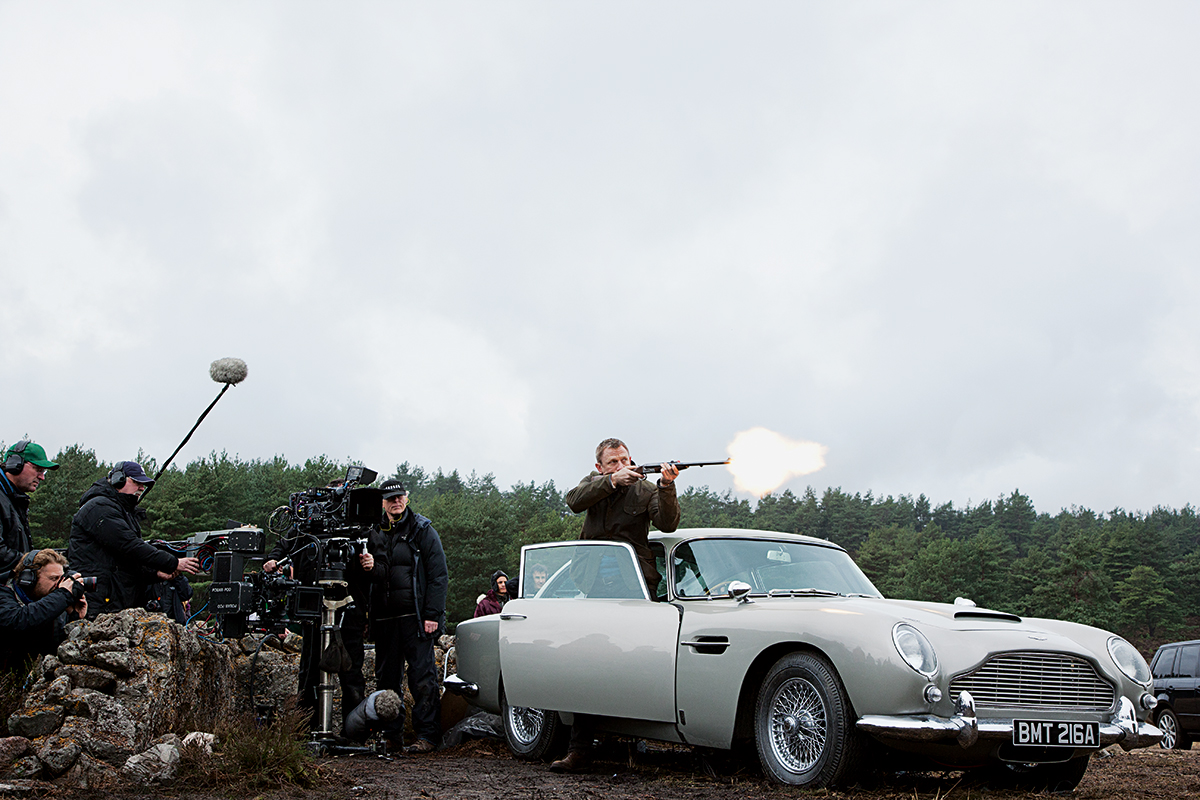Previous Article
Next Article
- AM WORLD
- FEATURES
- 100 YEARS OF ASTON MARTIN
- ARCHIVE
CENTENARY TRAVEL
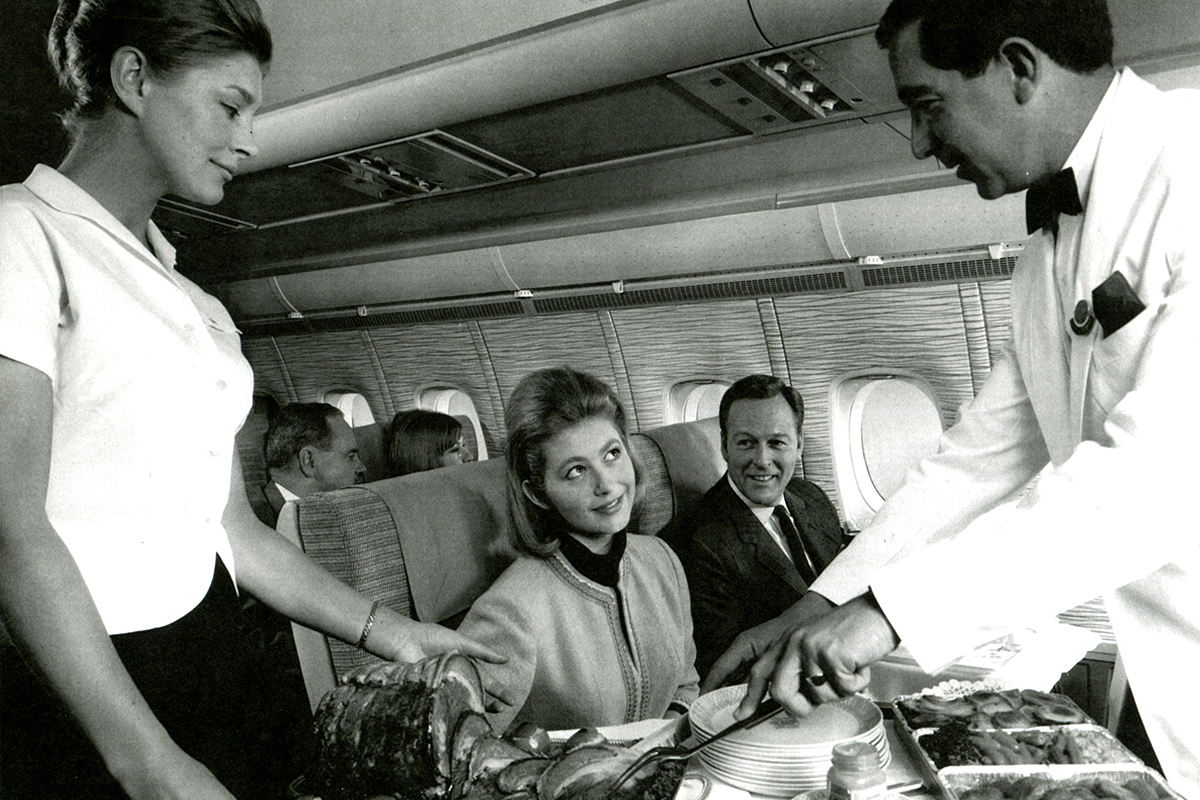
A couple settle back to enjoy a full roast dinner, served from the trolley, aboard a British Airways flight in the 1960s
Flight of
FANCY
The golden age of air travel in the 1950s and 60s saw the international jET-SET begin to travel the globe in previously unkNown style and comfort, writeS Simon Brooke
A fantasY WE’VE ALL INDULGED IN from time to time, even when cosseted in the relative peace and calm of an airport lounge, is wondering what it must have been like to fly during a time when air travel was the preserve of the wealthy few, when women wore fur coats and men sported elegantly cut suits while stewards in white jackets mixed cocktails and lit cigarettes for this ultra-smart elite.
Today, air travel is almost as accessible and mundane as taking the train, but when the first airliners came into service in the 1950s it was glamorous, exclusive and exciting. Celebrities such as Marilyn Monroe, Frank Sinatra and Sophia Loren mingled with the stratospherically wealthy such as Aristotle Onassis and the then Aga Khan. Cabins, still based on railway carriage layouts, offered tasteful decoration and spacious seats complete with antimacassars—those pieces of fabric positioned over the seat at head level—as well as ashtrays. The constraining encumbrance of the seat belt was yet to arrive. Some planes even included miniature electronic organs to provide musical entertainment while others staged on-board fashion shows. The ambience mirrored that of an exclusive members’ club or cocktail party. Relaxed, intimate and extremely comfortable, the chosen few could mingle, gossip and do deals.
Cabin crew would serve food from lavish displays on trolleys, carving roast beef and even, it’s said, flambéing meat and crêpes Suzette. Dinner was served on china plates and eaten with metal, sometimes silver-plated, cutlery. There was champagne in ice buckets, cocktail shakers and a range of the very best wines. Before the arrival of the gate-to-aircraft tunnel, convenient but claustrophobic though it might be, the steps down from the aircraft offered every air traveller, especially if they were female, the perfect way to make an entrance in front of the waiting paparazzi—another innovation that helped promote this world of international celebrity to a wider audience.
Jeweller Laurence Graff, OBE, started flying in the early 1960s as he developed his business. He remembers the luxury but also the sociability among the minority who regularly flew in those days.
“I set out on a series of extraordinary voyages. I visited places I had never heard of before, such as Sandakan, Tawau, Sabah and Sarawak,” says Graff, who recently acquired a 1966 Aston Martin Short Chassis Volante, which is now undergoing a full restoration. “I travelled on my own, always with a case of samples, making contacts and friends and setting up local wholesale connections along the way. I must have been an interesting sight to them, a young man carrying a suitcase full of gems. On my trips around the world, I was always struck by the kindness and courtesy of the people working within the airline industry; nothing ever seemed too much trouble.”
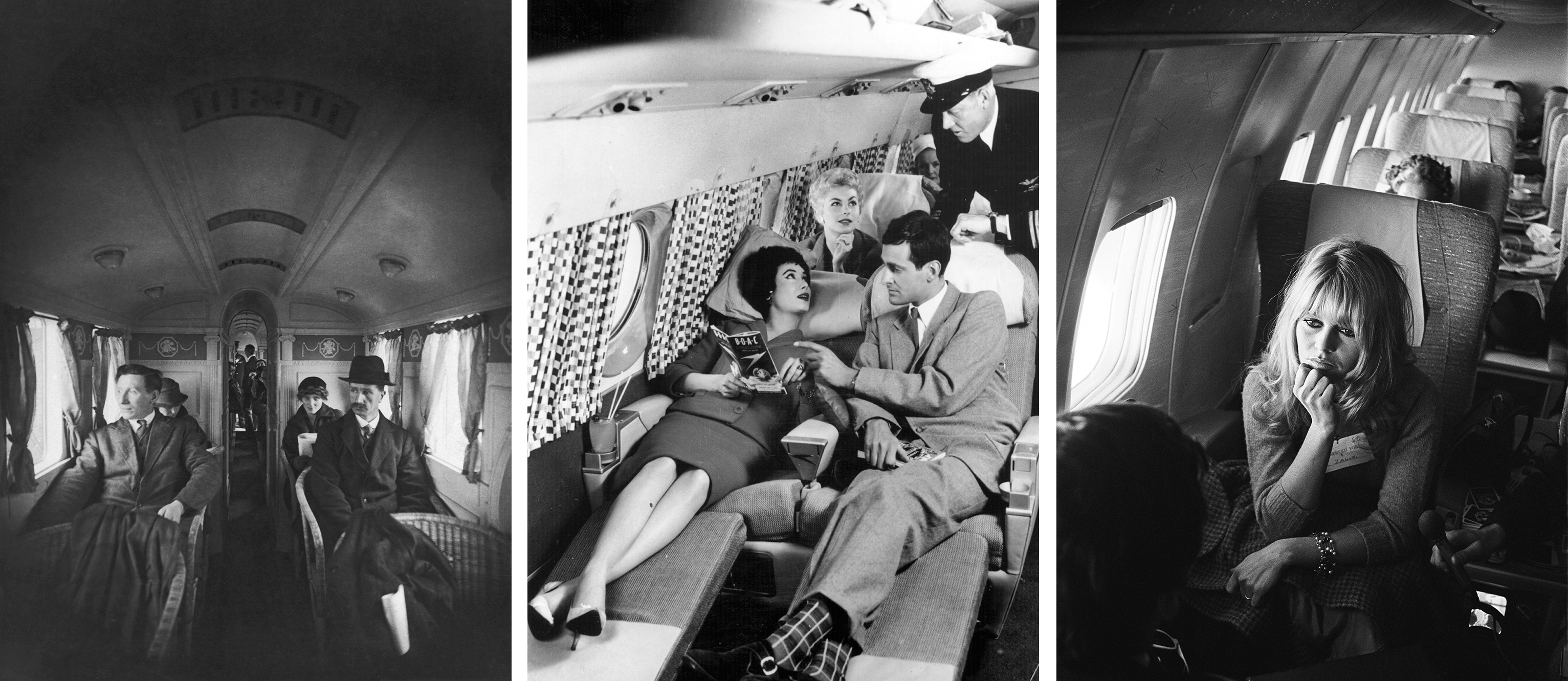
1st: the railway carriage-like interior of an Imperial Airways aeroplane in 1935 ; 2nd: relaxing in the sleeper seats aboard the new Comet 4, which flew from New York to London in under six-and-a-half hours in 1958; 3rd: Brigitte Bardot, travelling between New York and Los Angeles in 1965.
Certainly the crew themselves were often only a short step away from this world of celebrity and glamour. Female attendants were chosen for their looks, their figures and their cut-crystal accents. Pan Am required its ladies to be of “good moral character”. According to Betty Riegel, author of Up in the Air, a memoir published this summer, “it was like a finishing school, par excellence”. She was recruited alongside an ex-model, an actress and a member of the exotic Bluebell Girls dance troupe. “We really did feel as if the world was our oyster,” she says. “If we needed Thai silk for a special outfit, we’d bid to do the round-the-world trip to Bangkok to buy the silk, drop it off in Hong Kong together with a page torn from the on-board Vogue magazine, and have it ready on the return trip. There were also special insider places for manicures, pedicures and massages passed down from the senior stewardesses and pursers.”
Style and celebrity aside, inevitably it was technology that shaped air travel’s golden age. Pressurisation, the creation of an internal atmosphere within the aircraft, meant that planes could fly higher than ever before, to around 20,000 feet, while passengers felt as if they were travelling at 3,000 feet.
It was the invention of the jet engine, however, that really ushered in the era of luxurious, international air travel. The world’s first scheduled commercial jet service was inaugurated on 2 May 1952 by the British Overseas Airways Corporation (BOAC), the predecessor of British Airways, using the de Havilland Comet. The first commercially successful service started six years later in October 1958, offering a service between London and New York. The menu included Consumé Yvette, lobster mayonnaise, tournedos Rossini and pear belle Hélène, followed by assorted cheeses.
As the on-board service was perfected, new aircraft and routes become available. Pan Am introduced the Boeing 707, widely considered to be the first commercial jetliner, on its first scheduled service between London and New York on 26 October 1958. Other cities such as Los Angeles, Madrid, Paris and Rome were soon opening up routes. By 1965, BOAC could boast: “The finest cuisine in the clouds—the BOAC VC-10 provides an object lesson in the art of good living. An aperitif before dining… an expertly chosen wine… or that post-prandial brandy or liqueur… just make your choice from the bar list. So here you are, cradled in comfort, cosseted by BOAC’s highly trained cabin staff who’ll see you want for nothing.”
The “jet set” arrived in the early Sixties. Suddenly, a small but glittering group could spend a few days in New York and then go on to the Caribbean or return to Europe to relax at St Tropez. Ian Fleming christened them “the international set,” and his James Bond novels illustrate the rise of speedy, effortless international travel. The first, Casino Royale, published in 1953, is set in a resort in France, easily accessible by boat and car. However, during his later works a decade or so afterwards, 007 travels around the world as any self-respecting jet-setter would. Fleming lovingly describes the jet set experience in his novels and, of course, he even has an airport named after him in Jamaica where he had a home called Goldeneye.
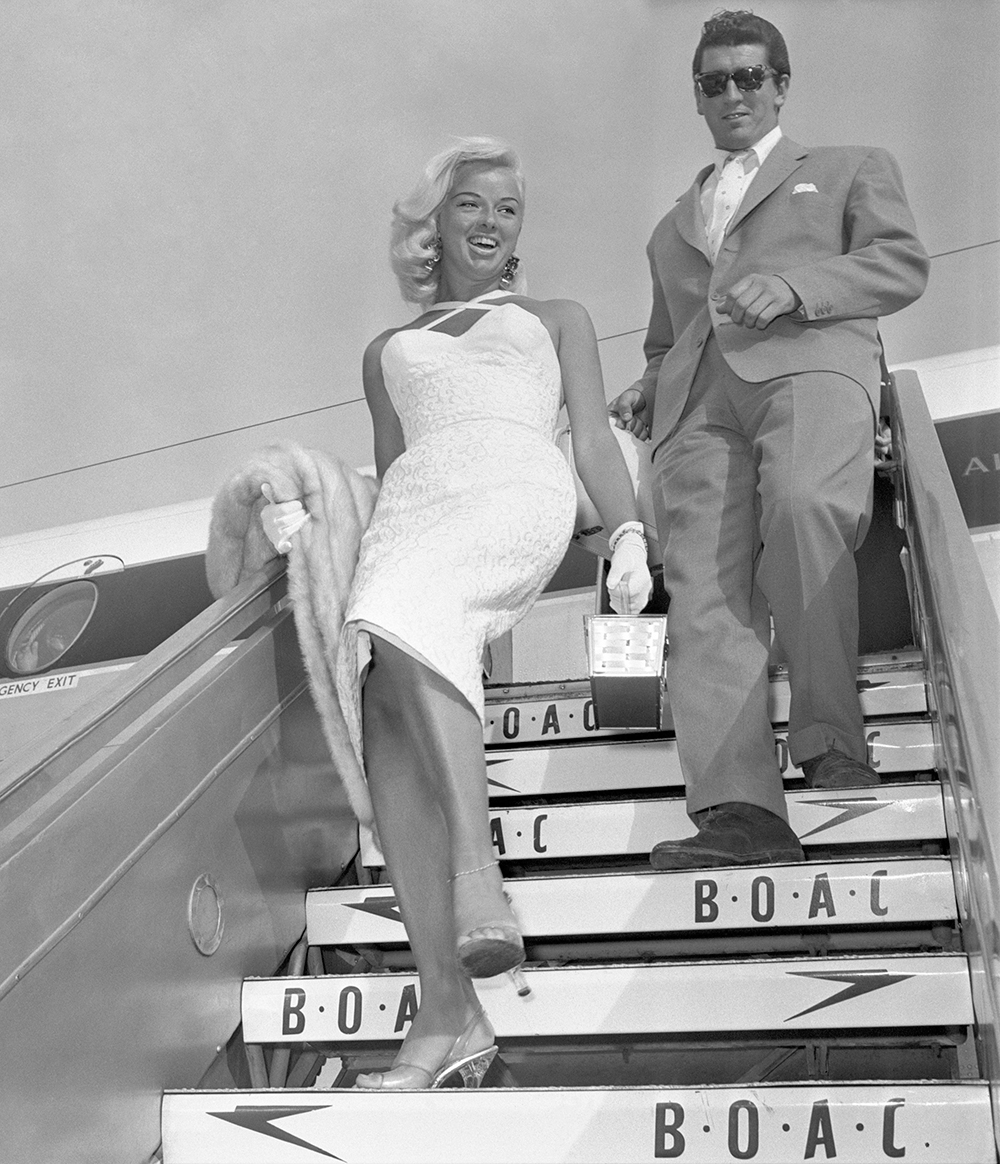
Diana Dors arrives at Ciampino airport in Rome in 1957.
Jet-set destinations were often hot and exotic in the case of Acapulco, Nassau and Beirut, as well as chic such as Cannes and Portofino. However, not every aspect of travel in the Fifties and Sixties was imbued with glamour. Heathrow, then known as London Airport, like most of its counterparts around the world, was nothing more than a collection of Nissen huts. Meanwhile, smaller airports such as Lydd in Kent, which saw its first commercial flight in 1954, also enjoyed rapid growth. By the 1960s it had become an internationally recognised air gateway, and was regularly used by royalty and celebrities such as Gregory Peck, Diana Dors and Humphrey Bogart among others.
Just as technological innovation had enabled the lucky few to enjoy exclusive, luxurious travel, it also began to open it up to the masses. In March 1969 alone, BEA, the sister airline of BOAC, carried over half a million passengers, more than had been carried by the old Imperial Airways during its whole history from 1924 to 1939. It’s also worth noting the effect of small details such as the introduction of the on-board public address system, which meant that cabin crew no longer had to inform each individual passenger about arrival times and the in-flight service. Printed tickets replaced handwritten documents and seat assignments.
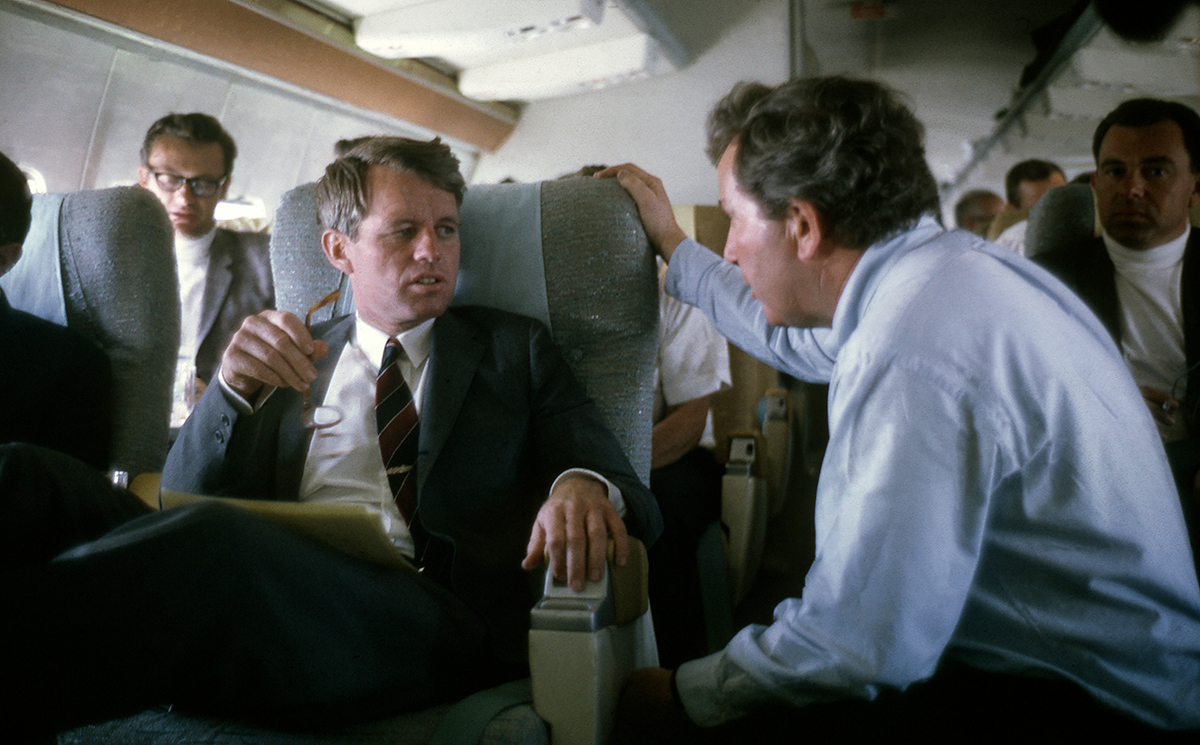
US Senator Robert F. Kennedy during his campaign for the Presidency in 1968
The jet set received a second wind with the introduction of Concorde in 1976. It covered many, if not all, of the traditional jet-set destinations, including Paris to Rio de Janeiro and London or Paris to New York. However, its thirst for fuel and a crash saw the aircraft retired in 2003.
Nowadays, the term “jet set” might be more likely to provoke sniggers than envy, but new aircraft are finding a ready market for a 21st-century “jet set”. Travellers are visiting business destinations such as Dubai, Singapore and Shanghai, places where Aston Martin is growing its business in tandem with the economic opportunities on offer.
Today, the airline industry is looking to recreate the exclusivity and allure of those early days of air travel and complementing it with the benefits offered by modern technology. The advent of the new A380, for instance, has ushered in a new golden age of travel. A year after it was introduced by Malaysia Airlines to the London-Kuala Lumpur route it has experienced stronger than expected growth, thanks in part to its luxuriously wide seats and 89in bed in First Class as well as entertainment technology—comfort and facilities that the early jet-setters would have marvelled at.
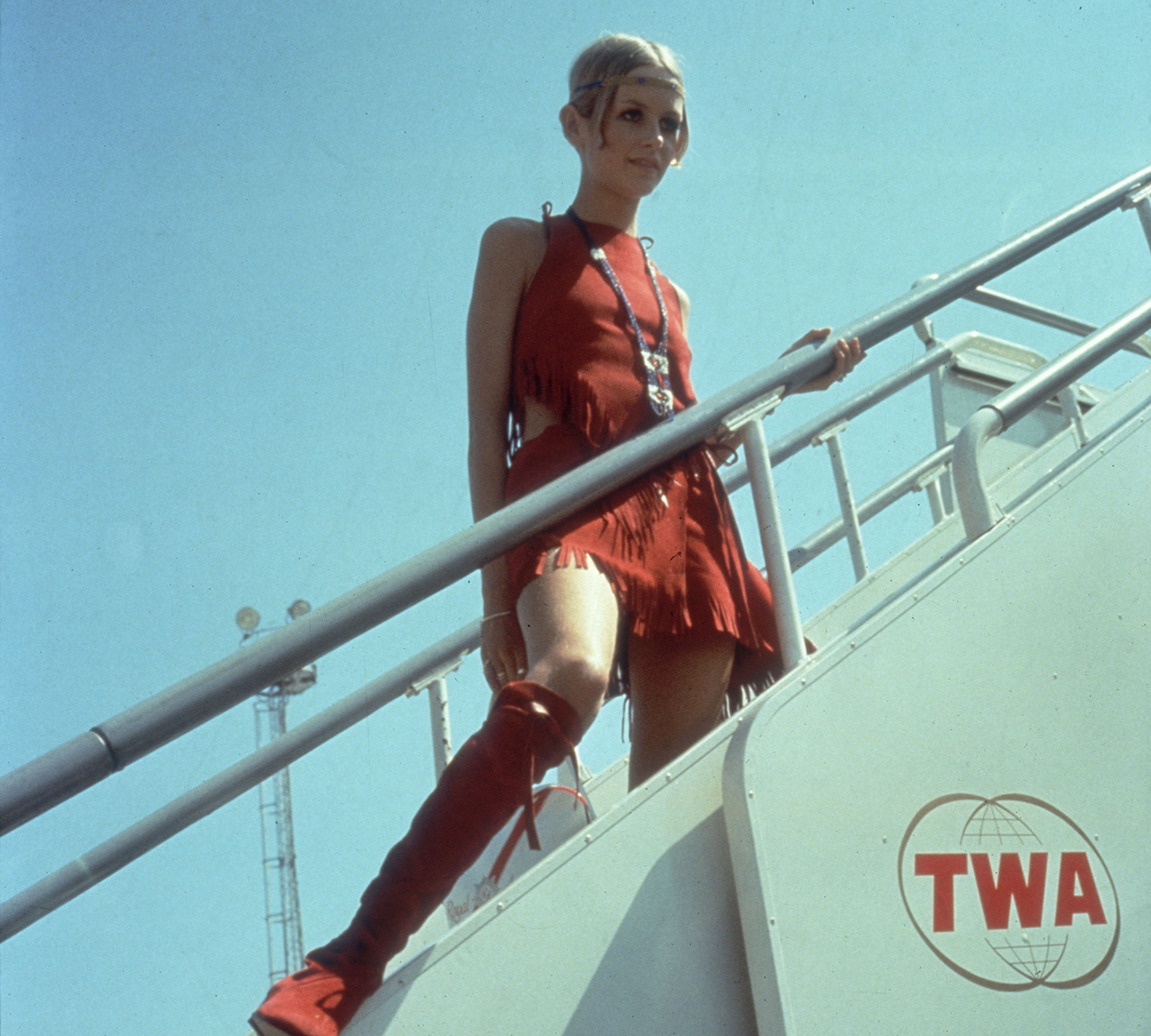
British model Twiggy boarding a TWA plane at Heathrow Airport in the mid-1960s.
British Airways is also seeking to establish a modern-day version of this much-admired era in the history of flight with its current First Class service. “First celebrates the return of classic British, understated elegance with attention paid to every detail,” says Frank van der Post, BA’s managing director, brands and customer experience. “Customers who experienced the luxury of the very first Monarch service would be delighted to know that First in 2013 still offers exceptional à la carte dining options, impeccable service and tailored exclusivity.” A spokesman for Air France says: “First Class travel is much more than a mere commodity, it constitutes a real experience of pleasure and well-being. Examples of this are La Première lounge at Charles de Gaulle airport and the dishes designed by Alain Ducasse.” The Ducasse uniform evokes the 1950s look, too.
At the time the luxury air travel experience was coming into its own, David Brown was overseeing a period of exciting expansion of Aston Martin—and there are further parallels. Today, a growing number of affluent, stylish consumers are hungry for an experience that combines the elegance and luxury of travel in this golden age of air travel with the advantages offered by modern technology. Just as Aston Martin owners love the timeless elegance of the marque’s profile and its association with style and elegance, they also appreciate the constant improvements that the company is making in the engine design and other technology.
Engineering and gadgets are constantly evolving and fashions in food and dress come and go, but one thing that the golden age of travel demonstrated is that exceptional style and service will always be in demand.

the First Class bar area on an Air Emirates A380, the super-jumbo helping to create a new golden era of international travel
CENTENARY
Previous Article
Next Article
- AM WORLD
- FEATURES
- 100 YEARS OF ASTON MARTIN
- ARCHIVE




